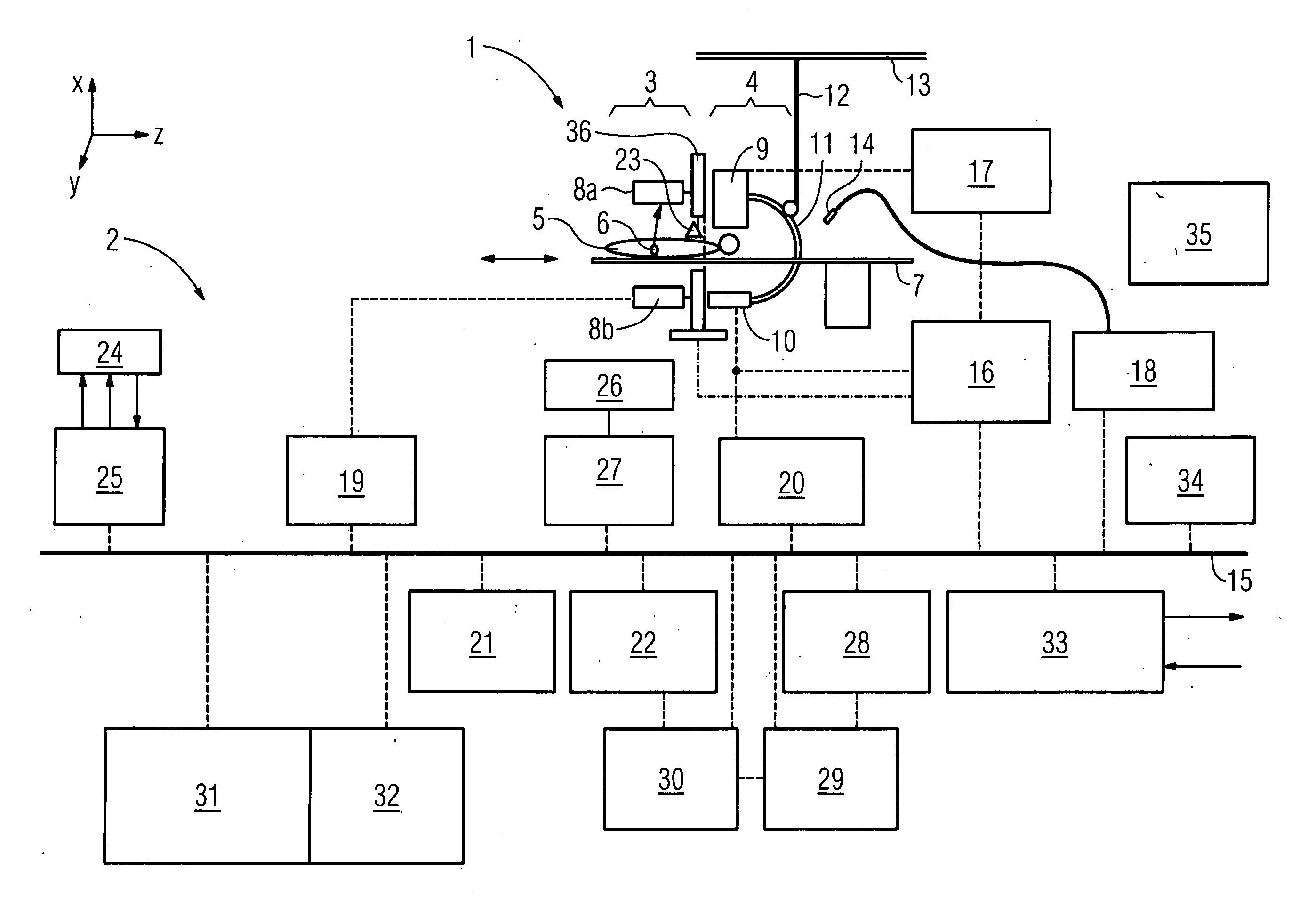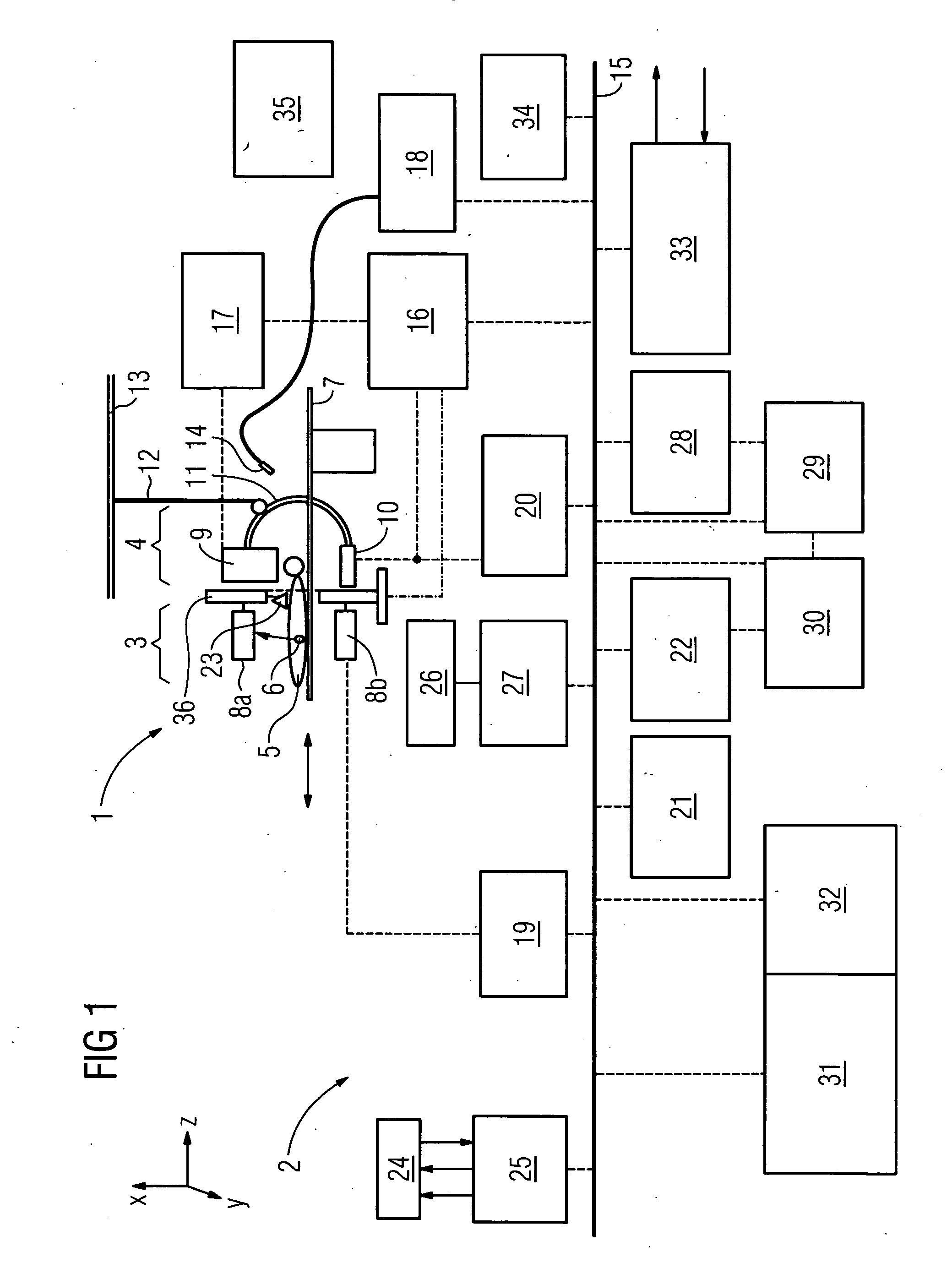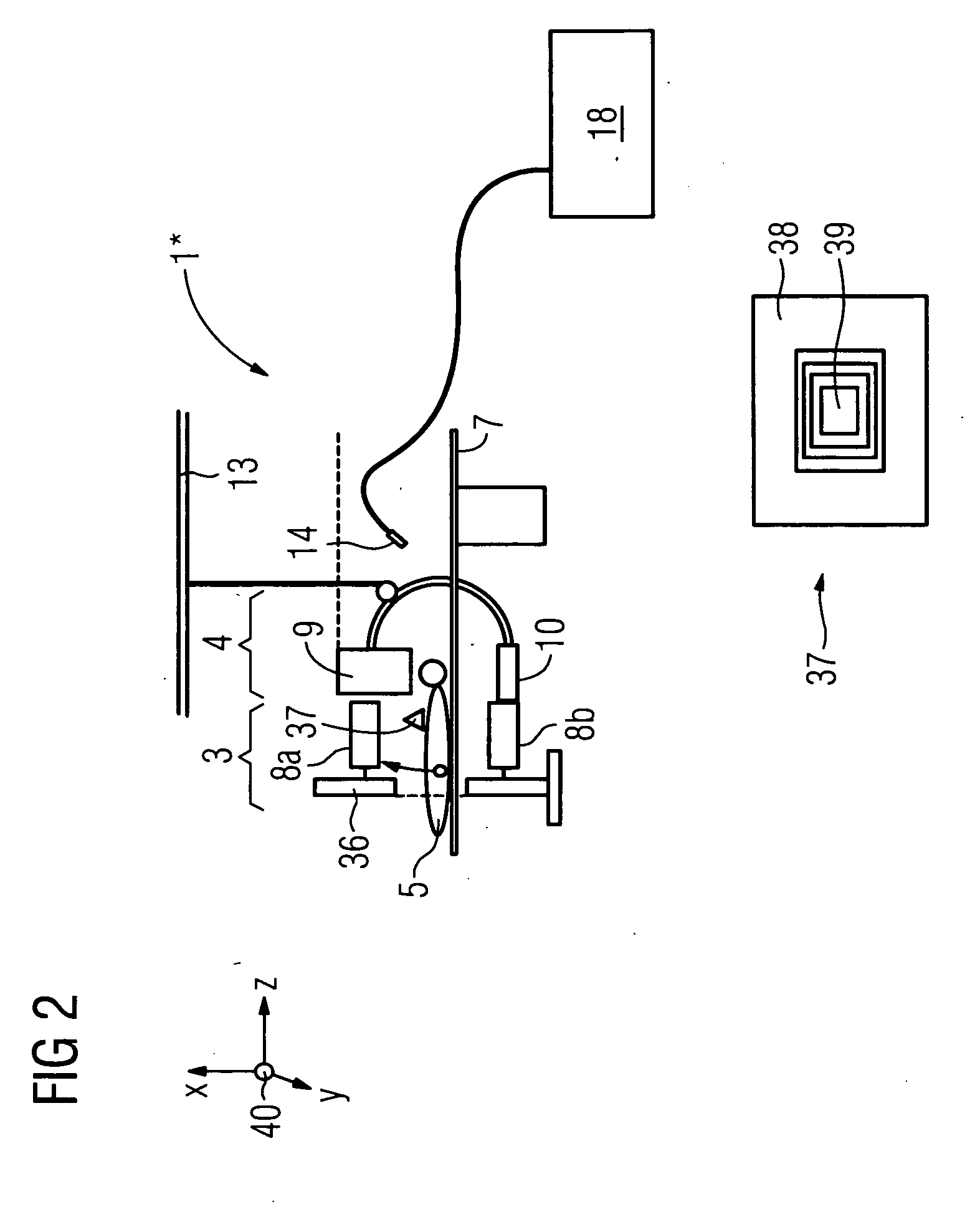Diagnosis device for radiographic and nuclear medical examinations
a radiographic and nuclear medical examination technology, applied in the direction of radiographic control devices, instruments, tomography, etc., can solve the problems of limiting the accuracy of detection, unable to provide good anatomical imaging, and unable to accurately locate tumors or metastases in the body of patients, etc., to achieve good anatomical imaging, good accessibility, and high registration precision
- Summary
- Abstract
- Description
- Claims
- Application Information
AI Technical Summary
Benefits of technology
Problems solved by technology
Method used
Image
Examples
Embodiment Construction
[0055]FIG. 1 shows a schematic representation of a first exemplary embodiment of an inventive diagnosis device 1 with the block diagram structure of an evaluation and / control device 2.
[0056] The diagnosis device 1 comprises a first measurement area 3 for recording SPE or SPECT images and a second measurement area 4 for recording x-ray images. A patient 5 administered with radiopharmacs containing radioactive materials prior to the examination, which accumulate in a tumor as tracer 6, is moved by means of a patient bed in the form of support 7, which can be moved in the Z-direction, for an examination, firstly through the first measurement area 3 and then through or into the second measurement area 4.
[0057] The first measurement area 3 comprises an SPE or SPECT measuring head, which is designed in FIG. 1 as two opposing detector arrays 8a, b which are aligned to one another. The detector arrays 8a, b each comprise a collimator (not shown in further detail), which operates as a dire...
PUM
 Login to View More
Login to View More Abstract
Description
Claims
Application Information
 Login to View More
Login to View More - R&D
- Intellectual Property
- Life Sciences
- Materials
- Tech Scout
- Unparalleled Data Quality
- Higher Quality Content
- 60% Fewer Hallucinations
Browse by: Latest US Patents, China's latest patents, Technical Efficacy Thesaurus, Application Domain, Technology Topic, Popular Technical Reports.
© 2025 PatSnap. All rights reserved.Legal|Privacy policy|Modern Slavery Act Transparency Statement|Sitemap|About US| Contact US: help@patsnap.com



